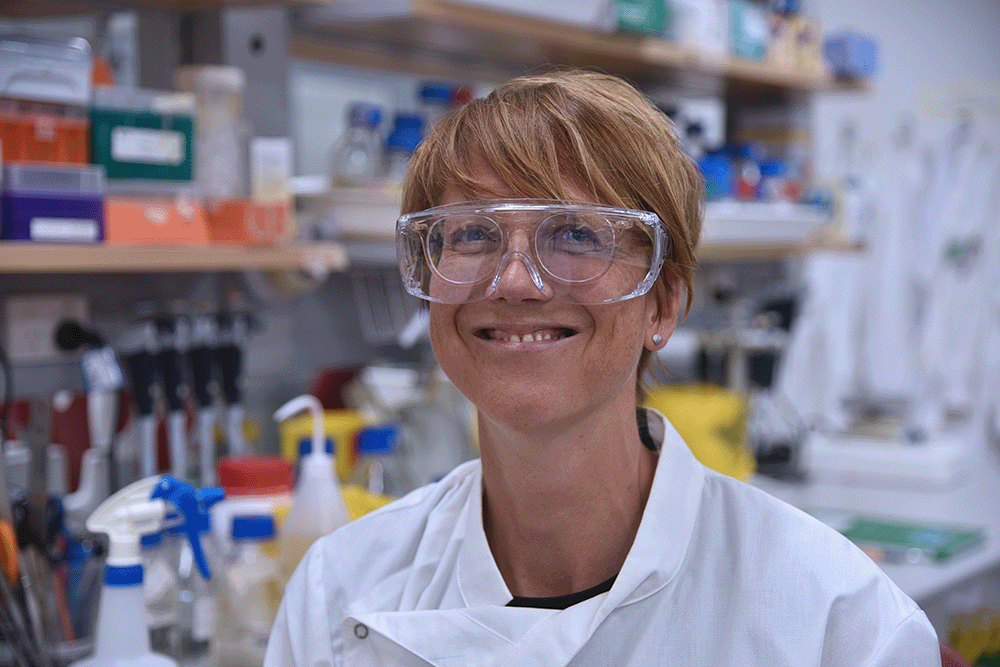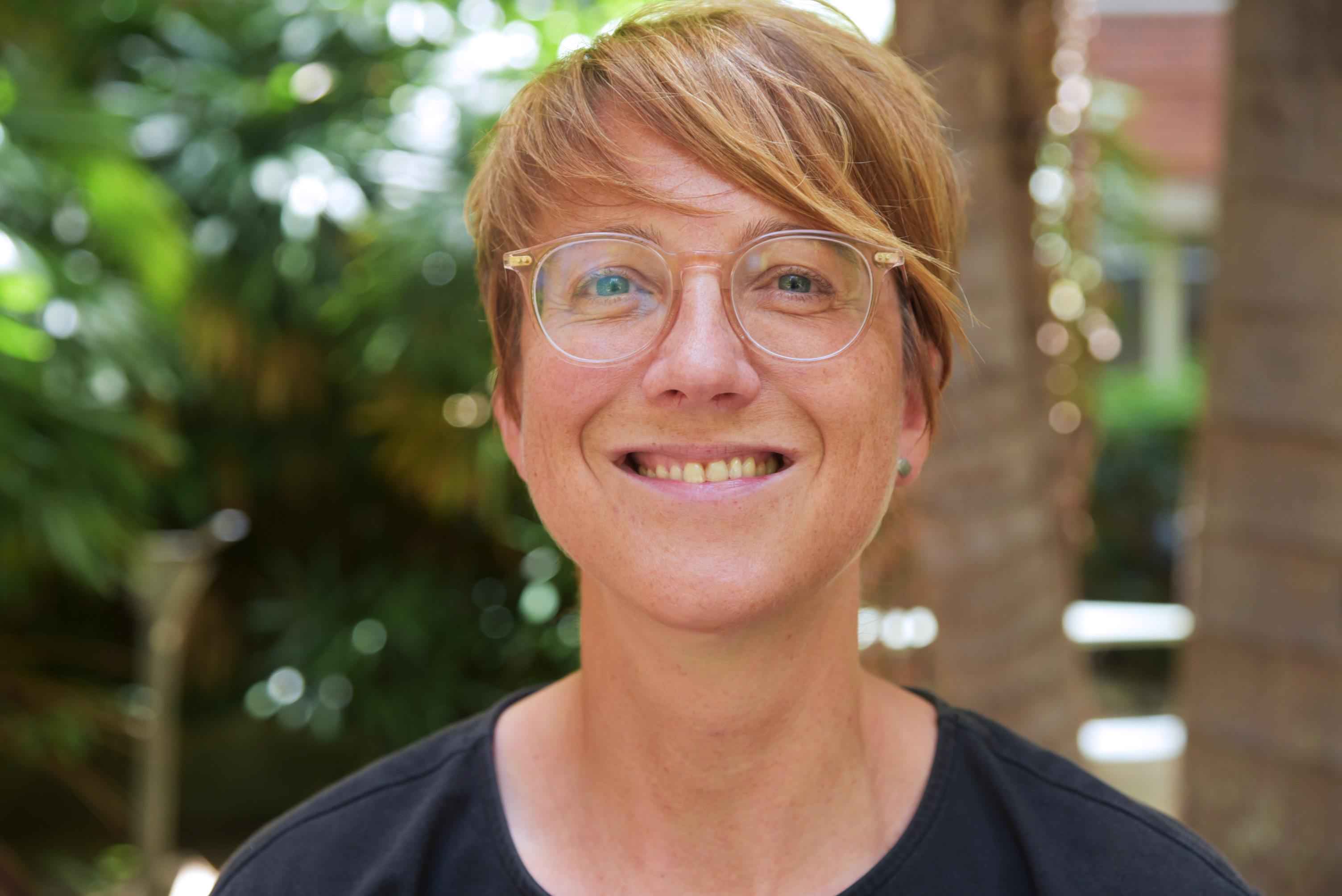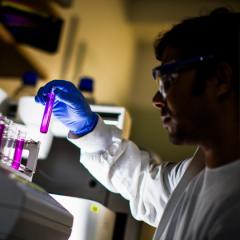In a nutshell, the work of Dr Birgitta Ebert – and synthetic biology in general – is taking natural microorganisms and redesigning them for industrial purposes.
But as Dr Ebert can attest, the wider push for sustainability is more than replicating fossil-fuel processes and it includes developing more sustainable manufacturing processes that harness the power of our natural world and reduce our carbon footprint.

Take, for example, the soap bark tree - native only to Central Chile.
“The tree is extensively cut down to extract a compound that is used as a vaccine adjuvant,” Birgitta says.
“But this means you need to kill many trees and destroy native forests.
“Our aim is to use synthetic biology to replicate the plant’s processes.
“We are implementing this biosynthetic capability into baker’s yeast, which we then can grow in a steel tank to brew this natural product like beer or wine, much more easily and with a lower impact on ecosystems than extracting it from natural sources.”

A researcher at the Australian Institute for Bioengineering and Nanotechnology (AIBN) since 2019 - and a chief investigator on the ARC Research Hub for Carbon Utilisation and Recycling (RECARB) - Birgitta’s work centres around unravelling the intricacies of microbial metabolism paramount to engineering microbes into potent cell factories for chemicals and materials.
Her expertise fits snugly with the AIBN’s overarching work in the bioeconomy, which includes developing new materials, medicines and fuels from organic materials, or creating them from waste using biological processes.
“Our mission is clear – to live more sustainably,” Birgitta says.
“Our research moves away from using fossil carbon, advocating for a shift toward eco-friendly practices that make industrial manufacturing greener and our ecological footprint smaller.
“Synthetic biology can make great contributions to these endeavours, and I think we are seeing more and more people embracing the potential it holds for a more sustainable future.”
Hailing from Dortmund in Germany, Birgitta’s scientific journey has taken her from a research group at the TU Dortmund University to the Institute of Applied Microbiology at RWTH Aachen University and finally across the equator to Queensland.
Read on to find out how she is helping to shape the future of our bioeconomy.
-
Birgitta, here’s your first question: is the surf better in Queensland than it is in Germany?
Well, you better do snowboarding if you want to do fun board sports in Germany. But surfing has absolutely been a great thing to do here though.
The weather and natural environment is definitely one of the big things that attracted me to moving to Australia.
 Your move to the AIBN also happened to coincide with desire to pursue synthetic biology?
Your move to the AIBN also happened to coincide with desire to pursue synthetic biology?
Yes. I came here in 2019 to join the UQ-CSIRO Alliance for Synthetic Biology, which was created to establish synthetic biology capacity in Australia. I had some ideas on how we could redesign microorganisms to produce certain plant metabolites. And I realised that this would be a good place to do it.
I suppose the overarching goal of my work now is contributing to more sustainable production by reducing and recycling waste.
But there is still a lot of work to do to scale up this type of thinking to a commercial level that helps the planet.
Would you say you have grown to appreciate the sustainability aspect of your research the deeper you get into it?
Oh, yes, I think so. At the beginning for example, we were exploring using sugar as a carbon source, which is not something that is entirely sustainable since this creates competition with food supply for a growing population on the planet. So, we are looking now more into using non-edible resources. For example, plastic waste is something we can make use of. The idea is that, because plastic sorting is quite expensive, we might be able to use mixed plastic waste that is chemically or thermochemically degraded into something we can directly feed to our microbes.
When you were a kid did you see yourself as a scientist? That is, were you drawn to science, or was it something that developed?
No, I was a pretty normal kid that loved to hang around with friends, do sports, hated to play the piano. I always liked mathematics and science, but I didn’t see myself as a scientist. Studying an engineering discipline was the perfect fit for me since this meant I could combine my interests in science and technology.
Are researchers just scratching the surface when it comes to what is possible with synthetic biology?
Absolutely, there is still so much to learn and explore about engineering biology. Most of the processes we have in society are petroleum-based. The goal should be a circular bioeconomy. And I believe synthetic biology will be a key technology for that.
Do you think Australia can lead the charge in this field?
Yes, I believe so. Australia possesses a diverse range of natural resources and a strong agricultural sector. With these strengths, together with strong research capabilities and a growing emphasis on sustainability commitment to environmental conservation, Australia could play a leading role in the bioeconomy –stronger investments, supportive policies and collaborations with countries with a stronger chemical industry sector, for example, could foster this development. 
If we were talking, say, in three years time… what would you like to have achieved in your research?
My ultimate goal is to promote and establish microbial biotechnology as a sustainable way of manufacturing.This is an interdisciplinary effort. Therefore a primary focus lies in expanding my research through maintaining and establishing strong inter- and national connections, besides, securing funding to facilitate the growth of my research group.


